Fathers of Our City
French Bottoms, Kansas City Chiefs, Harry S. Truman, The Country Club Plaza, Gabriel Prudhomme, John C. McCoy, Westport, Armour Meat Packing, bebop, Kelly’s Westport Inn, The Kansas City Star, BBQ, cable car line, Quality Hill, KCAI
Today, We Celebrate the Men Who Steered the Creation of Kansas City, Mo.
What better time than Father’s Day to celebrate the gents who helped grow Kansas City from the rough boondocks along the ferocious Missouri River into the urban cultural core it is today? We thank you, sirs, for your great contributions to this great city.
The Father of the French Bottoms, François Choteau
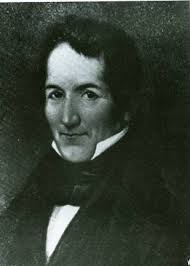
After a two-month honeymoon trip cruising along the Missouri River on a keelboat in 1821, Frenchman François Choteau and his wife, Berenice, settled on a natural levee where the Missouri and Kaw rivers converge just North of the present-day River Market neighborhood. Choteau traded merchandise such as knives, guns and brassware to tribes like the Kansa natives for furs, and the area swiftly developed as a trading community, aptly dubbed the French Bottoms. As industrialization and stockyards overcame the trapping trade, the French influence faded and the area earned a new name: the West Bottoms. Choteau died young from heart failure at age 41, but left behind a legacy that helped propel the small French river community into an epicenter of trade and commerce.
The Father of the Land, Gabriel Prudhomme
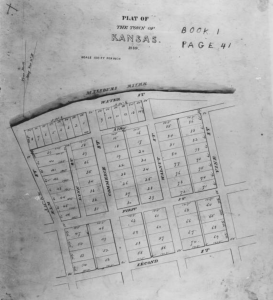
Little did Frenchman Gabriel Prudhomme know that when he purchased 257 acres of land nearby the current River Market in the early 1820s, it would become the very land from which Kansas City arose. Settlers coveted land along the river, and Prudhomme’s prized estate stretched east from Holmes Street and west from Broadway Boulevard, and included everything from the Missouri river south to Independence Avenue. He died in a barroom brawl only 10 months following his massive land acquirement. After some inheritance controversy, the land was sold in a public auction for $4,220 to 14 men who formed The Town Company. The land was then platted as the Town of Kansas, setting the stage for a thriving river community with development potential
The Father of Westport, John McCoy
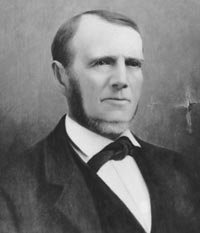
courtesy of Missouri Valley Special Collections
John Calvin McCoy purchased farmland in 1835, now sprinkled with bars, shops and restaurants. The farm turned into its own little town named Westport, as McCoy deemed it “the portal to the west” — the last chance for eager travelers (or weary ones, depending on how long they’d traveled) to stop for much-needed food and supplies before venturing out on the Santa Fe or Oregon Trail into the wild, wild west.
Daniel Boone’s grandson, Albert, ran a trading post in Westport out of present-day Kelly’s Westport Inn. Once the last stop for brave pioneers before heading out West, the trading post sat near the site of the bloodiest Civil War battle west of the Mississippi in 1864.
“Whisky, by the way,” Francis Parkman, “circulates more freely in Westport than is altogether safe in a place where every man carries a loaded pistol in his pocket.”
The Father(s) of a Red-Brick Legacy
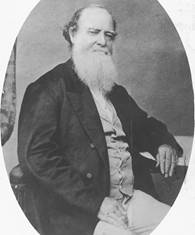
courtesy of The Boone Society
Brothers William and George Ewing built their trade post at Westport Road and Pennsylvania Ave. in 1850, bartering with the natives Shawnee Nation. The Ewings had a history in the trade business; their first post was located in Fort Wayne, then Logansport, one on Broadway Boulevard, even a location in St. Paul, Minnesota — and of course, Westport. Later Albert Boone (grandson to frontiersman Daniel Boone) ran the trade post. Since the 1940s, the occupant has remained the historic and much-beloved Kelly’s Westport Inn — the Irish pub is the oldest building in all of Kansas City.
The Father of Quality Hill, Kersey Coates
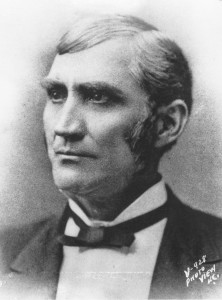
courtest of QUIA
Quality Hill, originally a charming and wealthy neighborhood atop the bluffs, was the handiwork of Kersey Coates. Coates arrived in Kansas City in 1854 with a desire to help develop the land that was then mostly wild pastureland. Coates House Hotel initiated the migration of affluent Kansas Citians to the area in the 1850s. Coates also established the Kansas City Board of Trade and secured the Hannibal Bridge’s location over the Missouri, making this city the crossroads of the country.
The Father of Gully Town, Father Bernard Donnelly

courtesy of the Ancient Order of the Hibernians
Father Bernard Donnelly, an Irishman (and the only actual ordained Father on the list), came to the Town of Kansas in the 1850s. Alongside his religious education, Donnelly possessed the additional knowledge of stone-cutting and masonry from his days in Cavanaugh, Ireland. This, alongside a crew he brought over from his homeland, allowed the town to expand upward through the bluffs. Roads and housing creeped up the limestone, the trenches earning Kansas City the nickname of Gully Town.
The Father of the Kansas City Star, William Rockhill Nelson
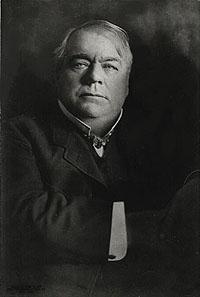
If you had two cents in your pocket in 1880, you might’ve picked up the first-ever edition of Kansas City’s long-running publication, the Kansas City Star. Founded by William Rockhill Nelson, a staunch man of ethics, the Star has received multiple Pulitzer prizes over the many years in print. Nelson also donated his estate to the arts upon his death, appropriated for an art museum. The result (alongside a similar gift from Mary Atkins): the Nelson-Atkins Museum of Art, a mainstay of Kansas City culture.
The Father(s) of Modern Transportation, Robert and William Gillham
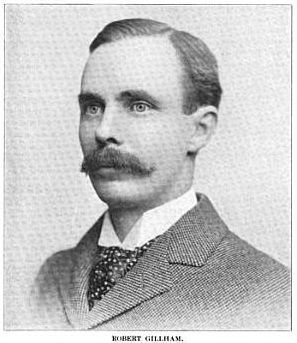
Robert and William Gillham engineered and installed the first sophisticated transportation in Kansas City in 1881 – the cable car system. Trailing up the steep Ninth Street hill, the car line ride reportedly gave commuters “death-defying thrills,” and was favored by many over the traditional horse-and-buggy travel method. The Ninth street incline descended directly into the traffic where Main and Delaware Streets converge, requiring a man stationed to caution pedestrians against oncoming cable cars by yelling “Wide Awake! Wide wake!” The Gillham’s cable system was just the third such installment in the entire United States.
The Father of Kansas City Pilsener, George Muehlebach

courtesy of Missouri Valley Special Collections
The Muehlebach Brewing Company, established by George Muehlebach and his brother, brought to and popularized in Kansas City the pilsener-style of beer. Following his brother’s death, Muehlebach razed the plant and erected his famed Beer Castle and an overhauled, modernized beer-brewing campus. He also played the role of hotelier, operating his namesake Muehlebach Hotel off of Wyandotte Street, across 12th Street from Barney Allis Plaza. Today it serves as part of the city’s downtown Marriott Hotel.
The Father of City Beautiful, George Kessler
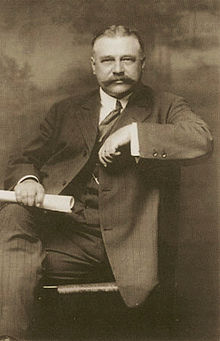
George Kessler led the design of both the City Beautiful and the Parks and Boulevards movements in Kansas City during the late 1800s and early 1900s. The architect transformed a city of rapid settlement, of hastily thrown-up, unattractive lodgings and businesses to keep up with the quick and ever-growing population. What emerged was the beautiful network of lush green parks and lovely boulevards, perhaps lined with bright rows of flowers or adorned with fountains or sculpture, a beautiful city indeed.
The Father(s) of the Million-Dollar Industry, Simeon and Phillip Armour
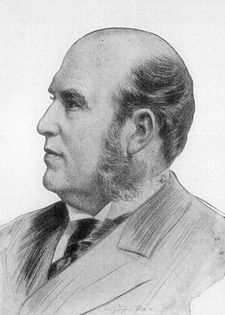
Simeon and Phillip Armour put up a meat packing plant in Kansas City’s burgeoning West Bottoms in 1892. The Armour & Co. plant was so successful that a small community actually rose around it. By the late 1800s, Armour Packing Company employed thousands of workers whose specialized skills included mallet stunning, carcass-knife wielding, sausage-casing stuffing and lard-cauldron tending, resulting in 12,000 pigs, 4,000 cows, and 5,000 sheep processed every day–we dominated the million-dollar meat packing industry.
The Father of Machine Politics, James Pendergast
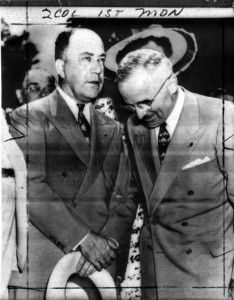
courtesy of the Truman Library
Though his younger brother, (Boss) Tom Pendergast, is a more widely known for Machine Politics, it was James Pendergast, a transplant from St. Louis, Mo., who claimed the first Boss title in Kansas City. Machine Politics is a political “system” that aimed to keep all the control of the county and its business and legal affairs “in the family,” so to speak. This system relied on bribery and often bullying in order to set key people in crucial positions such as Jackson County court judges. James relocated in the late 1800s, rising from dicey bar owner (where Tom worked when he later followed his big brother to the city) to alderman in 1898. James virtually owned the city as the original big Boss.
The Father of Kansas City Barbecue, Henry Perry
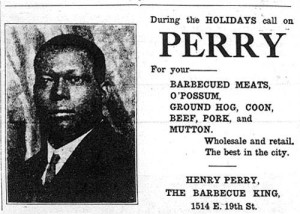
courtesy of the UMKC Library
The call Kansas City the barbecue capital of the world, but it was actually a Tennessean who first introduced the succulent smoked meat to the city. From a rickety stand in a Garment District alley, Henry Perry sold his savory goods and started the whole delicious barbecue movement. Today, Kansas City is ranked as the top spot for good ‘Q.
The Father of Kansas City’s Black Voice, Chester A. Franklin
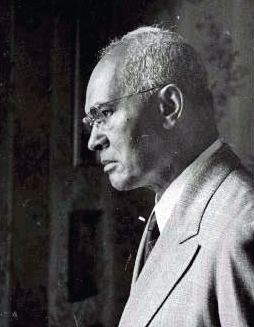
In 1913, armed with only a typewriter and his mother as staff, Chester A. Franklin launched Kansas City’s first publication of The Kansas City Call. The Call served as the first (and only, at that point) media outlet for black voices in the city, empowering an entire community and making great strides towards civil rights.
The Father of the Auto-Accessible Shopping Center, J.C. Nichols
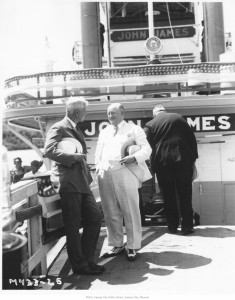
No stranger to hard work, J.C. Nichols grew up on a Missouri farm. Years later, Nichols never hesitated to jump right in and dig streets or lay sidewalks in the thick of his biggest project and contribution to Kansas City, the Country Club Plaza. Alongside bringing travelers, commerce and Spanish-inspired beauty to the city, the Plaza was also the first retail shopping center in the world to accommodate a newly growing trend in the 1920s – the automobile.
The Father of an Animation Phenomenon, Walt Disney
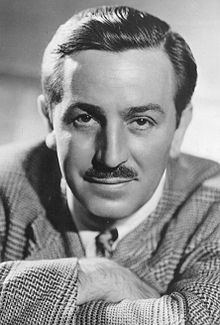
The one and only Walt Disney grew up in Kansas City, where he opened his first animation studio. In 1921, Disney’s Laugh-O-Gram studios began putting out animated shorts like Alice in Wonderland and Cinderella, the forerunners of the famous full-length films released after his move to Hollywood and rise to stardom. His movies and theme parks (based on his favorite childhood Kansas City amusement park) blossomed into an empire, still popular as ever, even after Disney’s death.
The Father of the Midwest Mural, Thomas Hart Benton
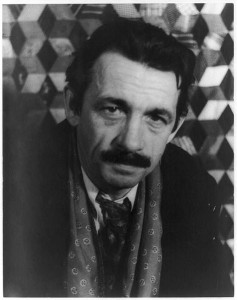
A pioneer of the Regionalist art movement during the 1930s, Thomas Hart Benton earned fame for his Midwest-landscape murals. A native Kansas Citian, Benton also instructed painting classes at the Kansas City Art Insitute. One of his former pupils would also rise to fame – though in film, not murals – the talented Dennis Hopper.
The Father of Bebop, Charlie Parker
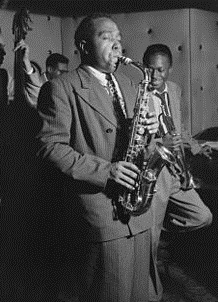
Kansas City was the jazz mecca of the 1920s, 30s and 40s. A young native, Charlie “Yardbird” Parker cultivated an incredible career as a prodigious player of the alto saxophone. Parker went on to develop his very own style of music (with another music legend, Dizzy Gillespie), called bebop, in the 1940s. Bebop is characterized by quick tempos and improvisation.
The Father of the Anchormen, Walter Cronkite
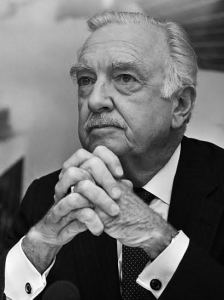
As a boy, Walter Cronkite spent his spare time at spots like Electric Park (an amusement park) in Kansas City’s East Bottoms neighborhood. After pursuing a journalism career, Cronkite landed the position of anchorman at CBS on the evening news in 1962. He’d anchor for 30 years, and his ethical style and on-the-ground reporting merited Cronkite the title “Most Trusted Man in America.”
The Father of the Kansas City Chiefs, H. Roe Bartle
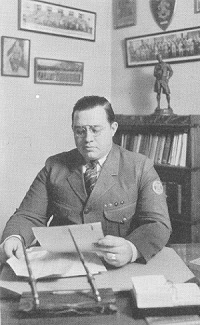
Though it was Lamar Hunt who brought his professional football team to Kansas City in 1963, it was at the persuasion of Mayor H. Roe Bartle. His great influence is eternalized in the Kansas City Chiefs very name – Bartle’s mayoral nickname was “The Chief.”










